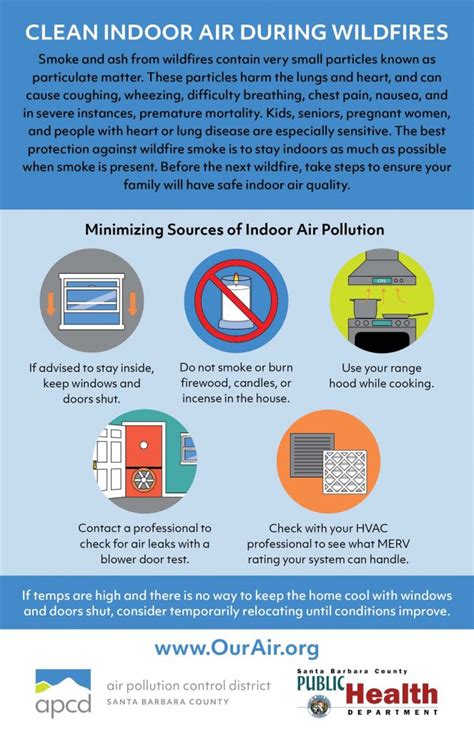The picturesque city of Santa Barbara, nestled between the Santa Ynez Mountains and the Pacific Ocean, is renowned for its breathtaking natural beauty and pleasant Mediterranean climate. However, like many other regions, Santa Barbara faces its own set of environmental challenges, including air quality issues that can impact the health and well-being of its residents and visitors. Improving air quality is a multifaceted task that requires the collective efforts of individuals, communities, and policymakers. Here are 12+ ways to contribute to enhancing the air quality in Santa Barbara, starting from today:
1. Promote Electric Vehicles (EVs)
transitioning to electric vehicles is a significant step towards reducing air pollution. EVs produce zero tailpipe emissions, decreasing the amount of pollutants released into the air. Santa Barbara residents can consider switching to EVs for personal use or supporting local initiatives that encourage the adoption of electric public transportation.
2. Enhance Public Transportation
A well-developed public transportation system can significantly reduce the number of private vehicles on the road, thereby lowering emissions. Supporting or advocating for improved bus services, bike lanes, and pedestrian-friendly paths can make a substantial difference in air quality.
3. Implement Smart Traffic Management
Intelligent traffic management systems can optimize traffic flow, reducing congestion which is a major contributor to air pollution. Technologies such as smart traffic lights that adjust their timing based on real-time traffic conditions can help minimize stop-and-go driving, which is particularly polluting.
4. Increase Green Spaces
Plants are natural air purifiers, absorbing carbon dioxide and releasing oxygen. Initiatives to plant more trees and create green spaces in urban areas can help mitigate the effects of air pollution. Community gardens, parks, and green roofs are excellent ways to increase the city’s green footprint.
5. Support Renewable Energy Sources
Shifting towards renewable energy sources like solar, wind, and hydroelectric power can drastically reduce the reliance on fossil fuels for electricity generation. Santa Barbara can promote the adoption of rooftop solar panels and support larger scale renewable energy projects.
6. Encourage Energy Efficiency
Improving energy efficiency in homes, businesses, and public buildings can reduce the demand for electricity and, consequently, lower emissions from power plants. Simple actions like using LED bulbs, improving insulation, and upgrading to energy-efficient appliances can make a difference.
7. Develop and Implement Air Quality Monitoring
Implementing a robust air quality monitoring system can provide real-time data on pollution levels, helping residents and policymakers make informed decisions. This can include setting up air quality sensors across the city and creating public platforms for data accessibility.
8. Foster Community Engagement and Education
Raising awareness about air quality issues and involving the community in mitigation efforts is crucial. Organizing workshops, seminars, and campaigns to educate residents about the importance of air quality and simple actions they can take to improve it can foster a sense of responsibility and action.
9. Implement Policies and Regulations
Local governments can play a pivotal role by enforcing stricter regulations on emissions from industries and vehicles, supporting clean energy projects, and incentivizing eco-friendly practices among residents and businesses.
10. Reduce Waste and Promote Recycling
Proper waste management is linked to air quality. Reducing, reusing, and recycling can minimize the amount of waste sent to landfills, where it produces methane, a potent greenhouse gas. Implementing efficient waste management systems and encouraging composting can also reduce the need for new landfills.
11. Advocate for Cleaner Industrial Practices
Encouraging local industries to adopt cleaner production processes and technologies can significantly reduce industrial emissions. This can involve supporting policies that incentivize green manufacturing practices and engaging with local businesses to promote sustainability.
12. Support Research and Development
Continuously funding and supporting research into new technologies and strategies for improving air quality can lead to innovative solutions. This includes advanced renewable energy technologies, more efficient transportation systems, and better air purification systems.
13. Encourage Voluntary Emissions Reduction
Sometimes, the simplest approach can be the most effective. Encouraging individuals and businesses to voluntarily reduce their emissions through challenges, competitions, or community pledges can foster a sense of community commitment to air quality improvement.
FAQ Section
What are the primary sources of air pollution in Santa Barbara?
+The primary sources of air pollution in Santa Barbara include vehicle emissions, industrial activities, and to a lesser extent, agricultural practices. Vehicle emissions are a significant contributor due to the reliance on personal transportation in the region.
How can individuals contribute to improving air quality?
+Individuals can contribute by making conscious lifestyle choices such as driving electric or hybrid vehicles, using public transport, biking, or walking when possible, reducing energy consumption at home, and supporting renewable energy projects. Even small actions like planting trees or reducing personal waste can make a difference.
What role can local government play in improving air quality?
+The local government can play a crucial role by implementing and enforcing strict emissions regulations, investing in public transportation, offering incentives for green practices, and supporting community initiatives aimed at improving air quality. They can also work with local businesses to encourage sustainable practices and clean technologies.
Improving the air quality in Santa Barbara is a collective effort that requires sustained commitment and innovative strategies. By implementing these measures and continuously seeking new ways to reduce pollution, the community can work towards a healthier, more sustainable environment for everyone.


